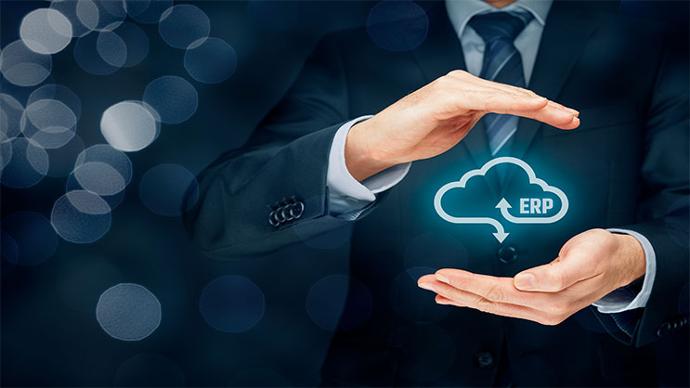Enterprise Resource Planning (ERP) systems help streamline business processes, improve data management, and boost overall productivity. With the rise of cloud computing, businesses now have two main options for ERP deployment: SaaS ERP and Cloud ERP. In this article, we will explore the differences between these two models, their pros and cons, and how to choose the right solution for your business.
Definition of Saas or cloud ERP
What is ERP?
Enterprise Resource Planning (ERP) is a software system that integrates various business functions such as accounting, inventory management, human resources, and customer relationship management. By consolidating these functions into a single platform, ERP systems enable organizations to streamline operations, improve collaboration, and make data-driven decisions.

WHAT IS CLOUD ERP?
Cloud ERP is a broader term that refers to any ERP system hosted on a cloud platform, which may include SaaS ERP, but also other deployment models such as Infrastructure as a Service (IaaS) and Platform as a Service (PaaS). Cloud ERP systems leverage the benefits of cloud computing, such as scalability, cost-effectiveness, and remote access, while still providing businesses with the necessary ERP functionality.
WHAT IS SAAS ERP?
Software as a Service (SaaS) ERP is a cloud-based software delivery model in which an ERP system is hosted and managed by a third-party vendor. The vendor provides the software and necessary infrastructure, allowing businesses to access the system via the internet. SaaS ERP typically operates on a subscription basis, with customers paying a recurring fee to use the software.
Comparing SaaS ERP and Cloud ERP
Cost
SaaS ERP generally offers lower upfront costs compared to traditional on-premise ERP solutions, as there is no need for businesses to purchase hardware or invest in extensive IT infrastructure. The subscription-based pricing model also allows for predictable monthly or annual expenses. However, long-term costs may be higher than with other cloud deployment options, depending on the vendor and the specific features required.
Cloud ERP solutions that utilize IaaS or PaaS deployment models may offer more flexibility in terms of cost structure, as businesses can often customize their infrastructure and choose the specific services they need. This can lead to potential cost savings over time, especially for larger organizations with complex requirements.
Deployment
SaaS ERP solutions are typically faster to deploy than traditional on-premise ERP systems, as the vendor handles most of the setup and configuration. This allows businesses to get up and running quickly, with minimal disruption to their operations. Updates and new features are also deployed automatically, ensuring that users always have access to the latest version of the software.
Cloud ERP solutions that use IaaS or PaaS deployment models may require more initial setup and configuration, as businesses have greater control over their infrastructure and software. However, this also allows for greater customization and flexibility in terms of system design and integration.
Scalability
Both SaaS ERP and Cloud ERP systems offer scalability, allowing businesses to easily expand or reduce their resources as needed. SaaS ERP solutions typically provide automatic scaling, as the vendor manages the underlying infrastructure. This can be an advantage for businesses that experience fluctuating demand or rapid growth.
Cloud ERP systems using IaaS or PaaS deployment models also offer scalability, but businesses may need to manage the scaling process themselves or rely on their cloud provider to handle it. This can provide more control over the scaling process but may also require additional resources and management.
Customization
SaaS ERP systems often have limited customization options, as the software is designed to be a one-size-fits-all solution. While many SaaS ERP vendors offer a range of features and integrations, businesses with unique or complex requirements may find that they cannot fully tailor the system to their needs.
Cloud ERP solutions that use IaaS or PaaS deployment models generally offer greater customization potential, as businesses have more control over the infrastructure and software. This can be beneficial for organizations with specific requirements that cannot be met by a standard SaaS ERP solution.
Data Security
Both SaaS ERP and Cloud ERP systems can provide robust data security, but the level of security depends on the vendor and the specific measures in place. SaaS ERP vendors typically handle data security for their customers, which can be an advantage for businesses without extensive IT resources. However, it also means that businesses must trust their vendor to maintain strong security practices.
Cloud ERP solutions using IaaS or PaaS deployment models allow businesses to maintain more control over their data security, as they can choose their own security measures and protocols. This can be advantageous for organizations with strict security requirements or those that prefer to manage their own security infrastructure.
Integration
Integration with other business systems is an important consideration when choosing an ERP solution. SaaS ERP systems often include pre-built integrations with popular software applications, making it easier for businesses to connect their ERP system to their existing tools. However, some businesses may require more customized integrations or connections to less common software.
Cloud ERP systems that use IaaS or PaaS deployment models offer greater flexibility in terms of integration, as businesses have more control over the software and infrastructure. This can allow for more customized integrations and connections to a wider range of software applications.
Maintenance and Updates
SaaS ERP vendors handle maintenance and updates for their customers, ensuring that the system is always up-to-date and running smoothly. This can be a significant advantage for businesses that lack the resources to manage their own ERP system.
With Cloud ERP solutions using IaaS or PaaS deployment models, businesses may need to manage their own maintenance and updates, depending on their chosen provider and setup. This can provide more control over the system but may also require additional resources and management.
Vendor Lock-in
SaaS ERP solutions can sometimes result in vendor lock-in, as businesses become dependent on their provider for software, infrastructure, and support. This can make it difficult to switch vendors or transition to a different ERP solution in the future.
Cloud ERP systems that use IaaS or PaaS deployment models generally offer more flexibility in terms of vendor choice, as businesses can select their own infrastructure and software providers. This can make it easier to switch vendors or migrate to a new ERP solution if needed, reducing the risk of vendor lock-in.
Support and Training
Support and training are crucial aspects of any ERP implementation. SaaS ERP vendors often provide customer support and training as part of their subscription package, which can be beneficial for businesses with limited resources or expertise.
Cloud ERP solutions using IaaS or PaaS deployment models may require businesses to seek their own support and training resources, either from their chosen cloud provider or through third-party services. This can provide more control over the support and training process but may also require additional resources and management.
Which one is right for your business?
Both SaaS ERP and Cloud ERP offer unique advantages and challenges. The right solution for your business depends on your specific needs, IT infrastructure, and growth strategy. By carefully evaluating these factors and considering the differences between SaaS ERP and Cloud ERP, you can make an informed decision that best supports your business objectives.
Evaluating your business needs
When choosing between SaaS ERP and Cloud ERP, it's essential to consider your specific business needs and requirements. Factors such as the complexity of your operations, the level of customization needed, and your IT resources should all play a role in your decision.
Assessing your IT infrastructure
The state of your existing IT infrastructure is another important consideration when selecting an ERP solution. Businesses with limited IT resources may find that a SaaS ERP solution is easier to implement and manage, while those with more extensive infrastructure may prefer the control and flexibility offered by Cloud ERP.
Considering your growth strategy
Your business's growth strategy should also factor into your ERP decision. If you expect rapid growth or need to scale your operations frequently, a SaaS ERP solution may offer the necessary flexibility and scalability. On the other hand, if you have a more stable growth trajectory, a Cloud ERP system using IaaS or PaaS deployment models may provide the level of customization and control needed to support your long-term goals.
FAQ about Saas ERP and Cloud ERP
Yes, it's possible to switch between ERP solutions, but the process can be complex and may require significant resources. It's essential to carefully consider your long-term needs when selecting an ERP solution to minimize the need for future transitions.
If your business has unique or complex requirements that cannot be met by standard SaaS ERP features, a more customized Cloud ERP solution using IaaS or PaaS deployment models may be a better fit.
Both SaaS ERP and Cloud ERP can provide robust data security, but the specific measures in place depend on the vendor and the chosen deployment model. It's essential to carefully evaluate the security practices of any ERP provider before making a decision.
Yes, both SaaS ERP and Cloud ERP solutions can be integrated with other software applications, though the specific process and compatibility will






